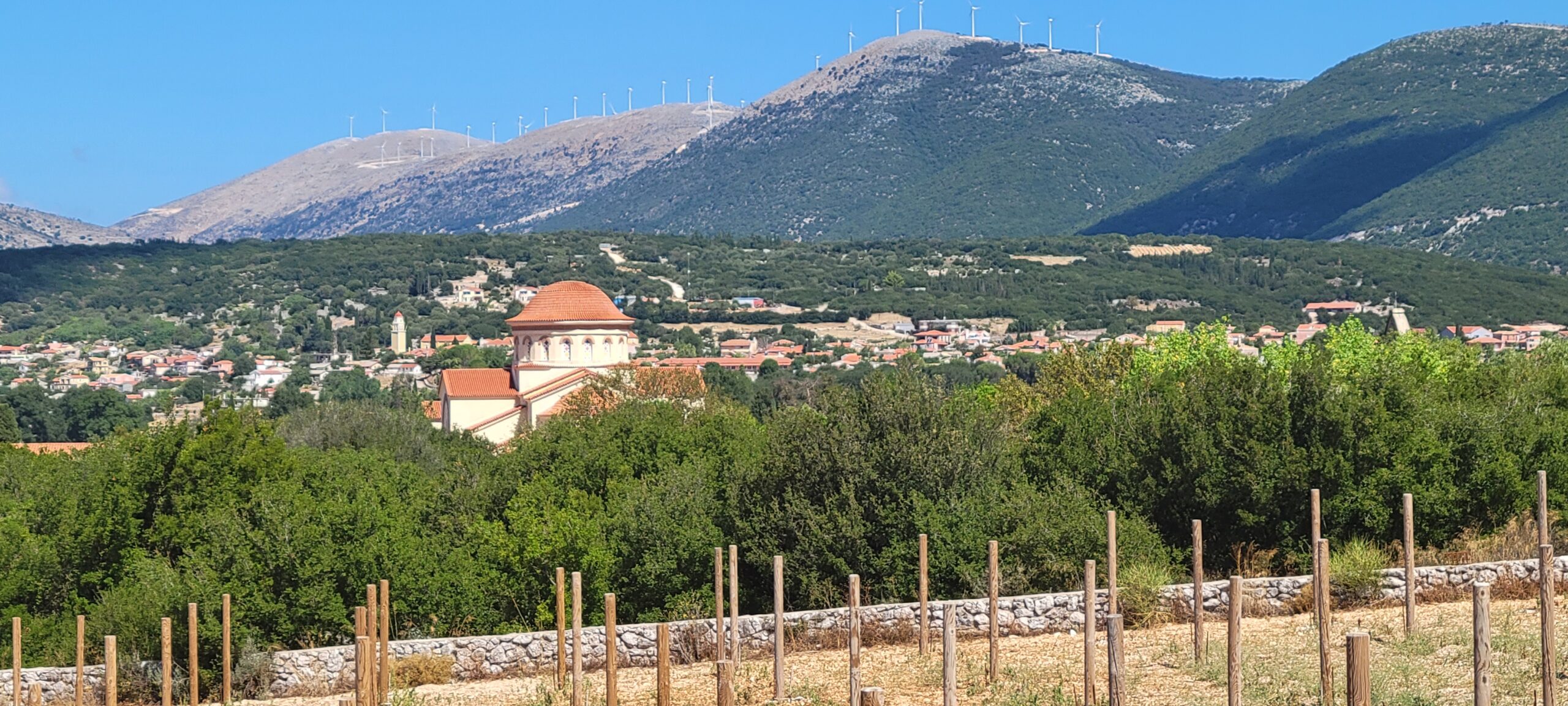Planning shore excursions for a Mediterranean cruise can feel overwhelming. Each port is packed with iconic landmarks and local gems, but with typically only one day in each destination, how do you decide what’s worth your family’s limited time?
After sailing five Mediterranean cruises over the past decade — from pushing a stroller through Rome’s cobblestone streets to wrangling two teenagers in Santorini — I’ve learned that the excursions you choose shape the rhythm and enjoyment of your entire trip. The challenge is finding a balance: seeing the big sights without exhausting your kids (or yourself) or blowing your budget.
This guide will walk you through how to:
- Weigh cruise line tours against independent operators
- Prioritize must-see attractions without overscheduling
- Blend history, culture, and downtime into a family-friendly mix
By the end, you’ll be ready to design shore days that give your family the best of the Mediterranean — without the stress of trial and error.
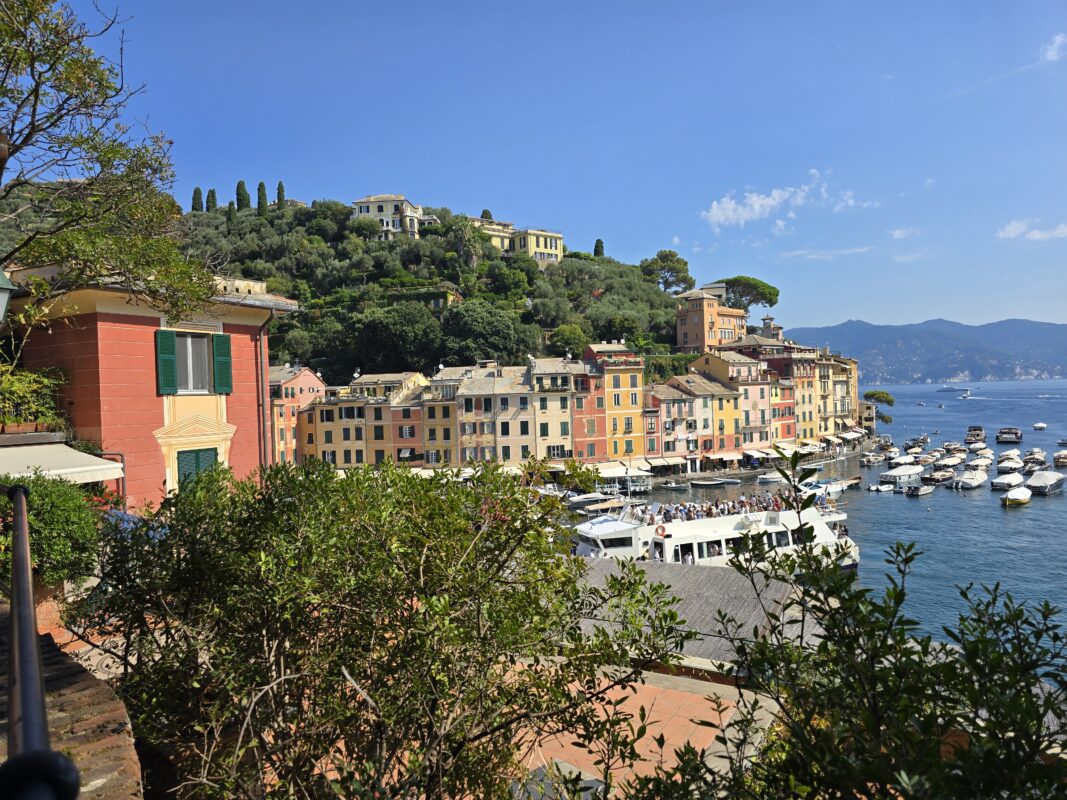
Understanding Mediterranean Shore Excursions
When your ship docks in a Mediterranean port, you’ll typically have several options for exploring. Understanding how these excursions work will help you make better choices about how to spend your precious time in each destination.
Types of Mediterranean Shore Excursions
Mediterranean excursions generally fall into a few main categories. History-focused tours take you to ancient sites like Pompeii, the Acropolis in Athens, or Ephesus in Turkey. Cultural experiences might include cooking classes, wine tastings, or visits to local markets. For the more active traveler, adventure excursions offer hiking, cycling, or water activities along the coast.
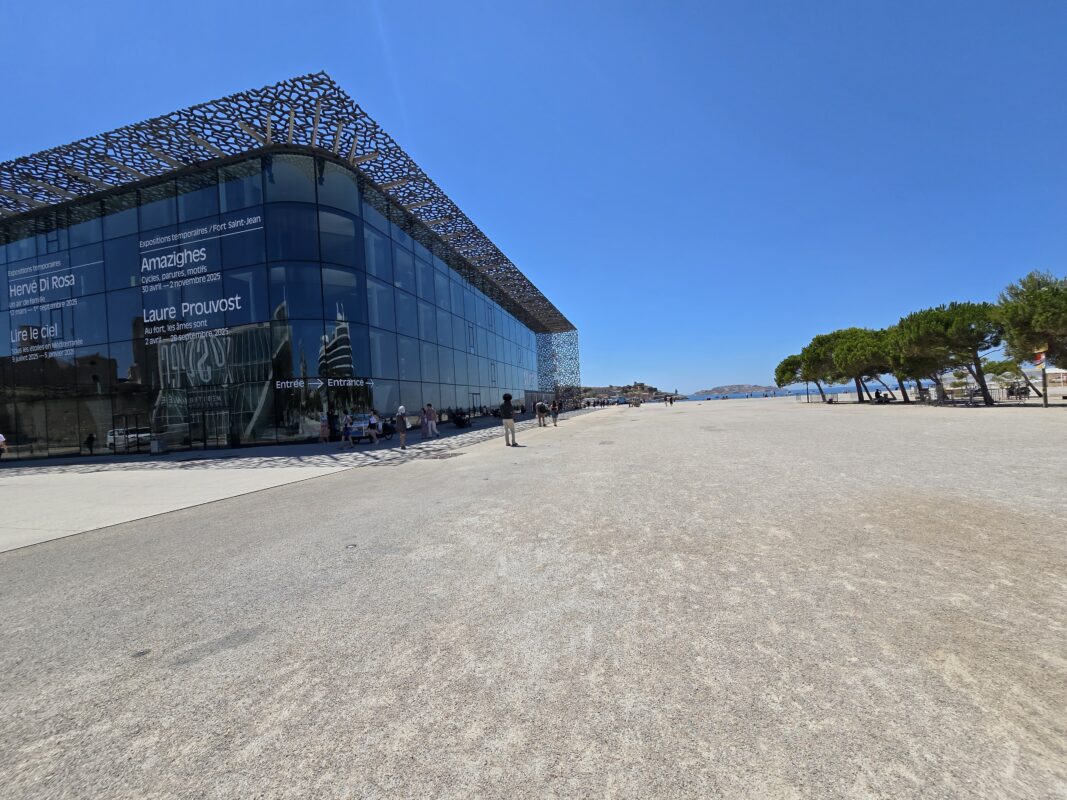
Most cruise lines organize their offerings as either half-day or full-day experiences. Half-day tours give you time to explore independently afterward, while full-day excursions typically cover major attractions and often include meals or transportation to sites further from port.
DIY, Cruise Line, or Private Tours? (Decision Framework)
When you step off your cruise ship in the Mediterranean, you have three main ways to explore each port. Each comes with different trade-offs in terms of cost, flexibility, and peace of mind.
DIY Excursions: Freedom and Savings
Planning your own shore excursions gives you complete control over your day. You decide exactly what to see, how long to stay, and when to return to the ship. Many Mediterranean ports like Barcelona and Dubrovnik are surprisingly walkable, making self-guided exploration both practical and enjoyable.
DIY excursions typically cost significantly less than cruise line tours. You’ll pay only for your own transportation, entrance fees, and meals – without the markup added by the cruise line.
Pros:
- Lowest cost option
- Complete schedule flexibility
- Explore at your own pace
- Discover hidden spots off the tourist path
Cons:
- No guaranteed return to ship if delayed
- Requires advance research and planning
- You handle all logistics yourself
DIY works best in compact, well-signed cities or when a single highlight is conveniently located near the port.
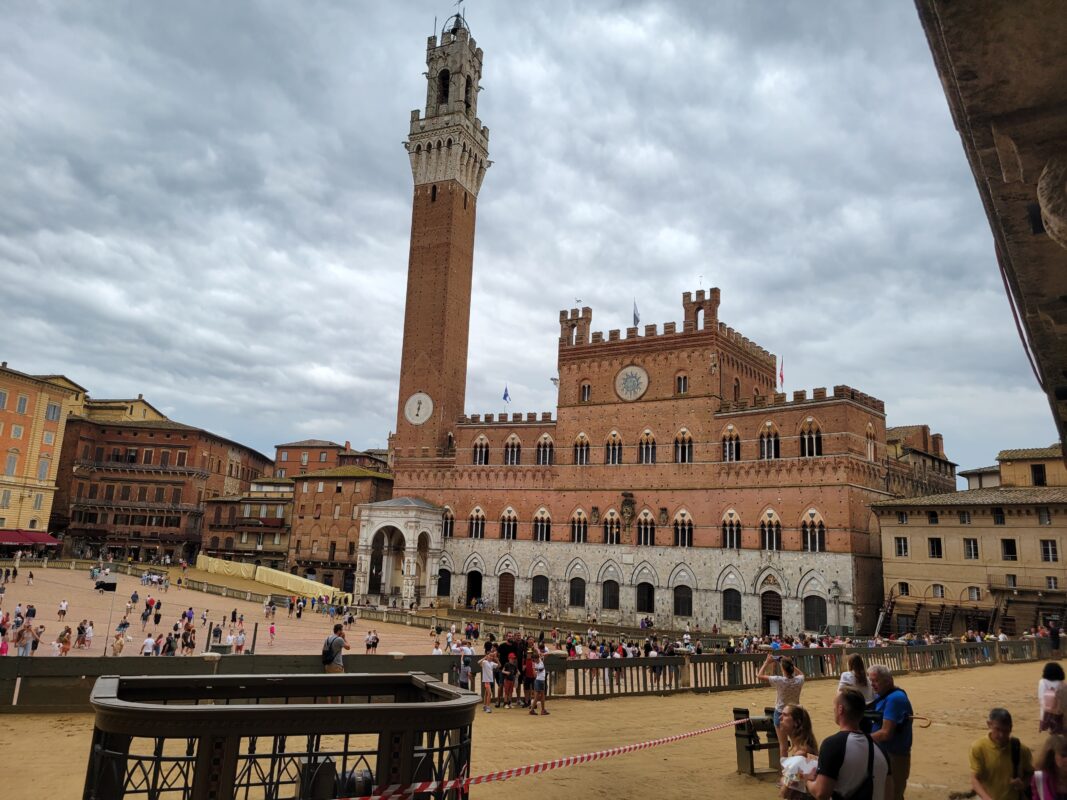
Cruise Line Shore Excursions: Convenience and Security
Cruise line excursions are organized tours sold directly through your ship. They typically include transportation, a professional guide, and admission to major attractions. For example, a Rome excursion might bundle visits to the Colosseum and Vatican with comfortable bus transportation.
While these tours cost more than going on your own, they provide significant peace of mind. The ship will wait for you if your tour runs late – a guarantee that doesn’t apply when you explore independently.
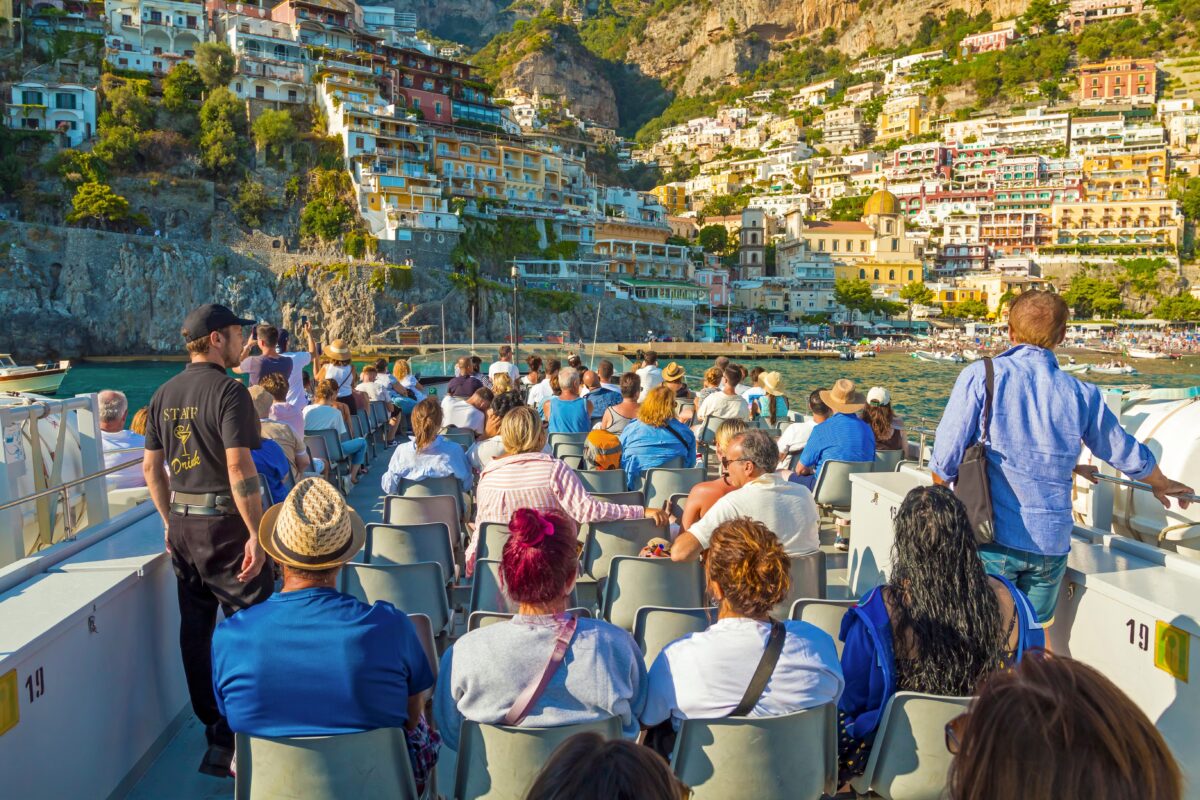
Group sizes can be large (sometimes 40-50 people), and itineraries often feel rushed as guides try to cover many sites in limited time. However, if you want a worry-free option with minimal planning, cruise line excursions deliver reliability.
Best for:
- Ports located far from main attractions
- First-time visitors to the Mediterranean
- Travelers who prioritize convenience over cost
- Those who worry about missing the ship
Consider choosing ship tours when transfers are long (e.g., Rome, Florence), tickets are complex (e.g., Vatican), or you want to avoid timing stress.
Private Guides and Drivers: Personalized Experiences
Hiring a private guide or driver offers an excellent middle ground between DIY freedom and cruise line convenience. You get a customized itinerary without the stress of navigating unfamiliar cities or arranging transportation.
This option works particularly well in ports like Naples, where a private driver can efficiently take you to Pompeii, the Amalfi Coast, and Positano in a single day – something that would be challenging to arrange on your own.
Private tours cost more than DIY exploration but can be surprisingly affordable when shared among a small group. Many travelers find the personalized attention and flexibility worth the extra expense.
Advantages:
- Customized itineraries based on your interests
- Local expertise without large tour groups
- Flexibility to adjust plans during the day
- More authentic experiences off the tourist track
Things to consider:
- Higher cost than DIY (though often less per person than ship tours when shared)
- Need to research and book reliable operators in advance
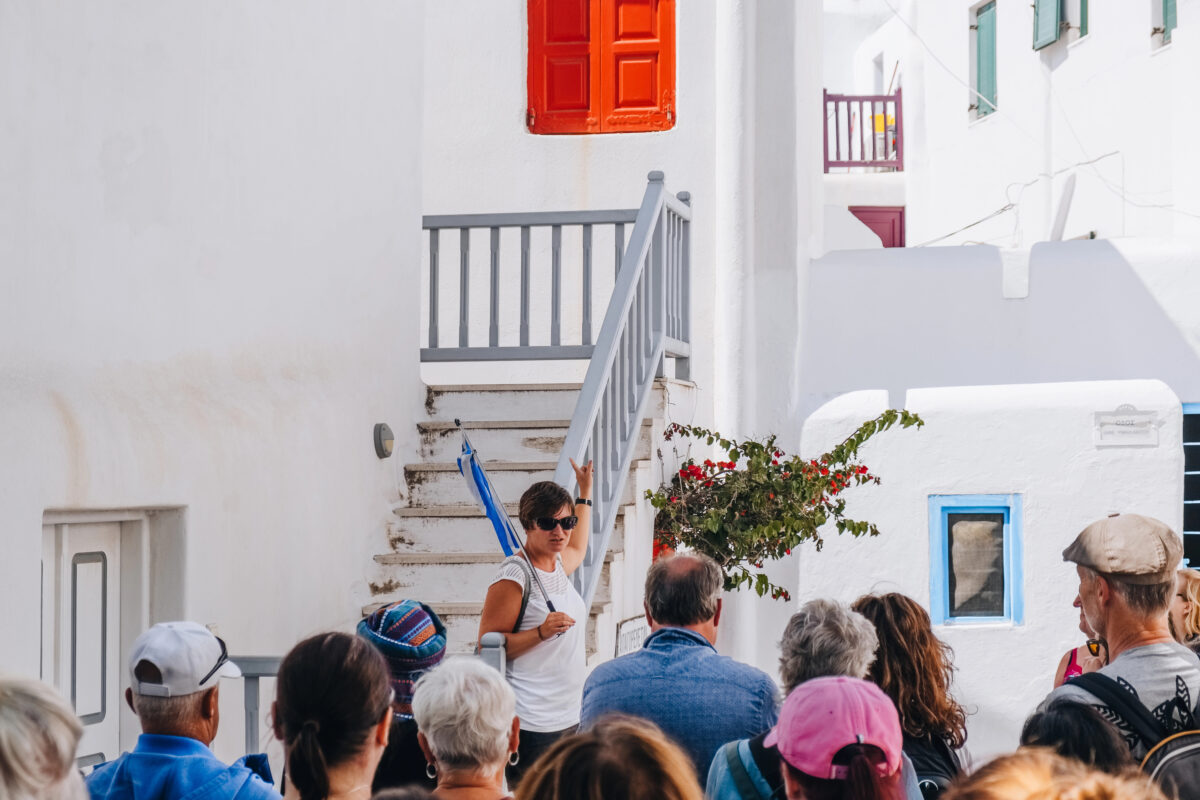
Booking Through Independent Tour Providers
If you like the idea of a smaller group or private tour but don’t want to spend hours researching local operators, services like Viator, Shore Excursions Group, and GetYourGuide can be a smart option. These platforms connect you with local guides and curated excursions that often mirror what the cruise line offers—just with fewer people and at a lower price.
For many families, this strikes a balance between the peace of mind of a ship-sponsored excursion and the flexibility of booking a private guide directly. Reviews and customer support add an extra layer of reassurance, and cancellation policies are often more flexible than those provided by the cruise line.
One important distinction: while Viator and GetYourGuide do not guarantee a return before your ship departs, Shore Excursions Group offers a “back-to-ship guarantee.” If their excursion runs late, they’ll cover the cost of getting you to the next port of call. That added protection makes them especially appealing for travelers who want savings and flexibility without giving up peace of mind.
How to Choose the Right Excursion Style
Your ideal choice depends on your travel preferences, budget, and comfort level with independent exploration. Consider these key factors when deciding between DIY adventures, ship-sponsored tours, or private guides.
Key Factors to Consider
Budget plays a major role in your decision. Ship tours typically cost the most because cruise lines add a significant markup. DIY excursions are usually the cheapest option, especially if you use public transportation. Private guides fall somewhere in between, with costs that can be shared among your travel group.
Time management is another crucial consideration. Ship tours guarantee you’ll return before departure, while DIY and private tours require you to keep track of time yourself. If you’re anxious about missing the ship, a cruise-sponsored excursion provides valuable peace of mind.
Your comfort level with planning and navigating unfamiliar places matters too. If you enjoy researching destinations and don’t mind figuring out public transportation, DIY works well. If you prefer structure with minimal effort, ship tours provide clear schedules. Private guides offer flexibility without the stress of organizing everything yourself.
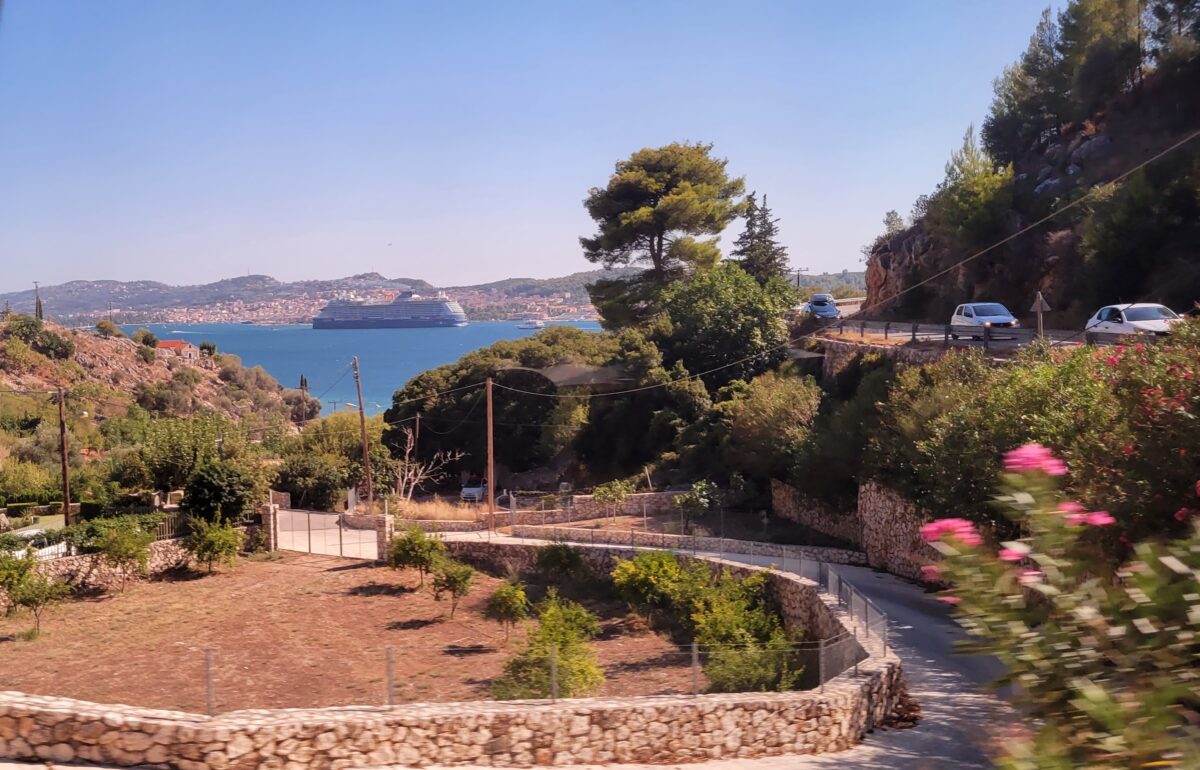
Matching Excursion Styles to Port Destinations
Different ports call for different approaches. In walkable cities with good public transportation like Barcelona or Athens, DIY excursions often make the most sense. You can easily reach major attractions on your own and explore at your own pace.
Ship tours become more valuable in ports where logistics are challenging, such as remote locations or places with limited transportation options. They also help when you want to see multiple highlights that are spread out geographically.
Private guides shine in ports with rich history and culture, such as Rome or Istanbul. A knowledgeable local can take you beyond the tourist highlights and provide insights you’d miss on your own.
Many experienced cruisers mix and match approaches across different ports. You might book a ship tour for a complex destination like Ephesus, hire a private guide in Rome, and explore Barcelona independently.
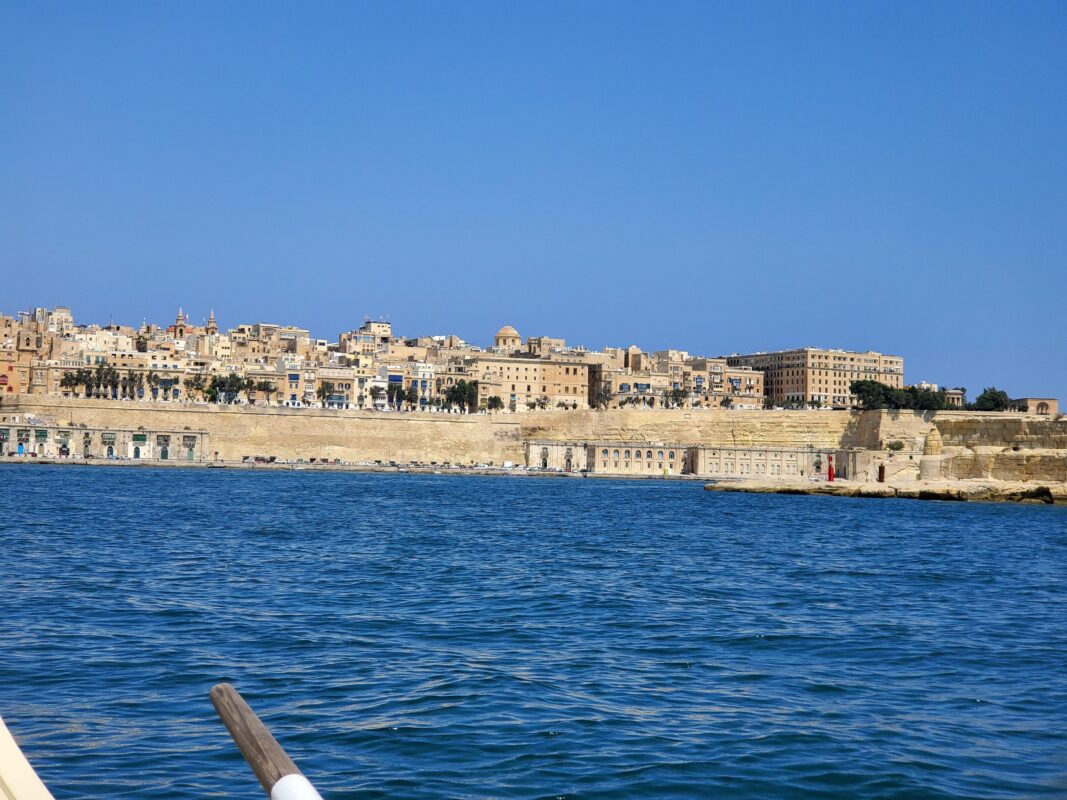
Valletta itself is one of the most walkable cruise ports in the Mediterranean, with history, views, and culture all within easy reach of the harbor.
Planning Your Mediterranean Port Days
Smart planning makes all the difference between an enriching Mediterranean cruise and an exhausting one. Thinking about your itinerary, pacing yourself between ports, and packing appropriately will help you enjoy each destination without burning out.
Choosing the Right Itinerary
Mediterranean cruises typically fall into two categories: Western routes (Spain, France, Italy) and Eastern routes (Greece, Turkey, Croatia). Each region has its own pace and highlights, and your excursion choices often depend on which side of the Med you sail. For a deeper dive into how these itineraries compare, along with tips on picking the one that best fits your family, check out our guide to Mediterranean cruise itineraries.
Port-Day Packing (What’s Worth Carrying)
What you bring to port can greatly enhance your excursion experience. Pack a lightweight backpack with water, sunscreen, and a hat. Comfortable walking shoes are absolutely essential, as many Mediterranean ports feature cobblestone streets and uneven ancient sites.
Carry a copy of your ship’s schedule, including all-aboard times. A small amount of local currency helps in places where cards aren’t widely accepted or for small purchases like snacks or souvenirs.
If you’re visiting religious sites like St. Peter’s Basilica or mosques in Istanbul, pack a scarf or light cover-up to meet dress codes. For beach stops in the Greek Islands, a swimsuit and quick-dry towel will come in handy.
A simple packing checklist for port days:
- Passport/ID and ship card
- Water bottle
- Sunscreen and lip balm
- Hat and sunglasses
- Comfortable walking shoes
- Local currency
- Scarf or cover-up for religious sites
- Lightweight snacks for kids
- Compact stroller or carrier (cobblestones + stairs)
- Camera or portable charger
These basics will keep you prepared for both busy city tours and relaxed coastal afternoons.
Must-See Mediterranean Ports & Excursions
When you travel through the Mediterranean, you’ll find that each stop offers unique history, culture, and food. Picking the right excursion can make your trip easier and more enjoyable for both adults and kids.
Mediterranean cruises typically visit ports in Greece, Italy, Spain, and Turkey. Each destination offers a unique cultural experience and a diverse range of historical attractions.
Greek ports, such as Piraeus, provide access to Athens and the renowned Acropolis. Katakolon connects you to ancient Olympia, where the first Olympic Games began in 776 B.C.
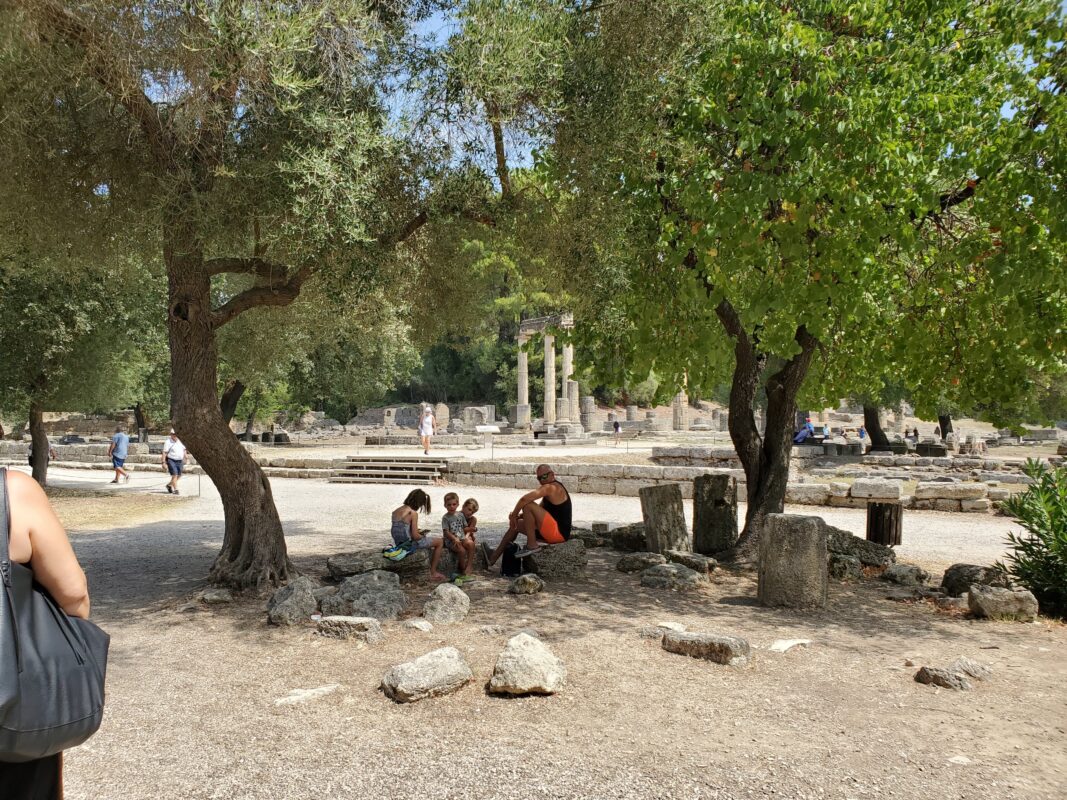
Italian ports include Civitavecchia, near Rome, Livorno, near Florence, and Naples, near Pompeii. These cities are home to some of the world’s most renowned art and architecture.
Spanish ports, such as Barcelona, allow you to explore Antoni Gaudí’s unique buildings. The Sagrada Familia Cathedral remains Spain’s most visited attraction.
Turkish ports such as Kusadasi provide access to Ephesus. This ancient city features well-preserved Roman streets, libraries, and amphitheaters.
Croatia’s Dubrovnik boasts medieval walls and serves as a filming location for Game of Thrones. The old town is situated directly on the coast, offering stunning sea views.
Must-See Italian Port Excursions
Italy offers some of the most rewarding stops on any Mediterranean cruise. From ancient ruins to Renaissance masterpieces, each port provides access to iconic sights that have shaped Western civilization.
Rome (Civitavecchia): Ancient Wonders and Vatican Treasures
When your ship docks in Civitavecchia, you’ll need about 90 minutes by bus or train to reach Rome. This distance makes a ship-organized tour particularly valuable, as it ensures timely transportation to and from the city.
The Colosseum typically tops most visitors’ lists. Walking inside this ancient arena gives you a tangible connection to Roman history. Nearby, the Roman Forum and Palatine Hill offer further insights into daily life in ancient Rome.
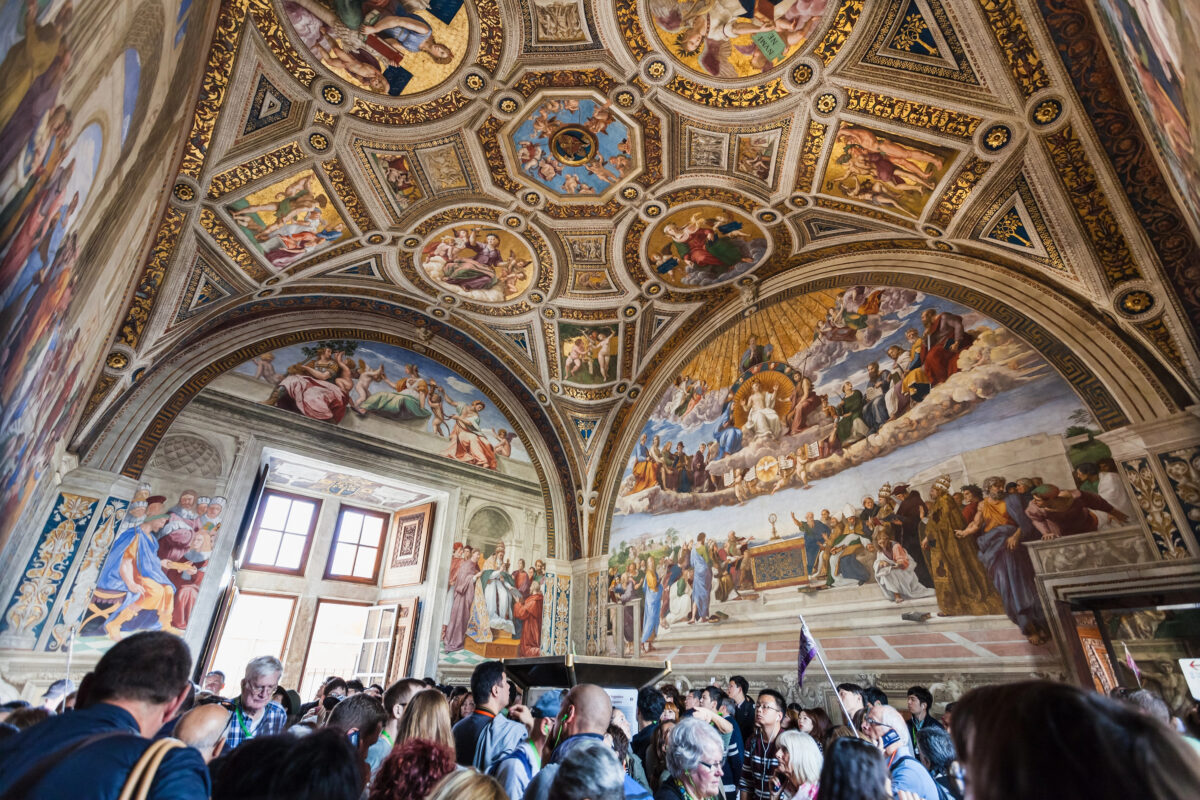
The Vatican is equally important, with the Vatican Museums, Sistine Chapel, and St. Peter’s Basilica all within walking distance of each other. Pre-booked tours help you skip the notoriously long lines and make the most of your limited time.
If you have additional time, the historic center offers the Pantheon, Trevi Fountain, and Piazza Navona, all within walking distance of each other. Many tours include free time for lunch, allowing you to sample authentic Roman cuisine before returning to the ship.
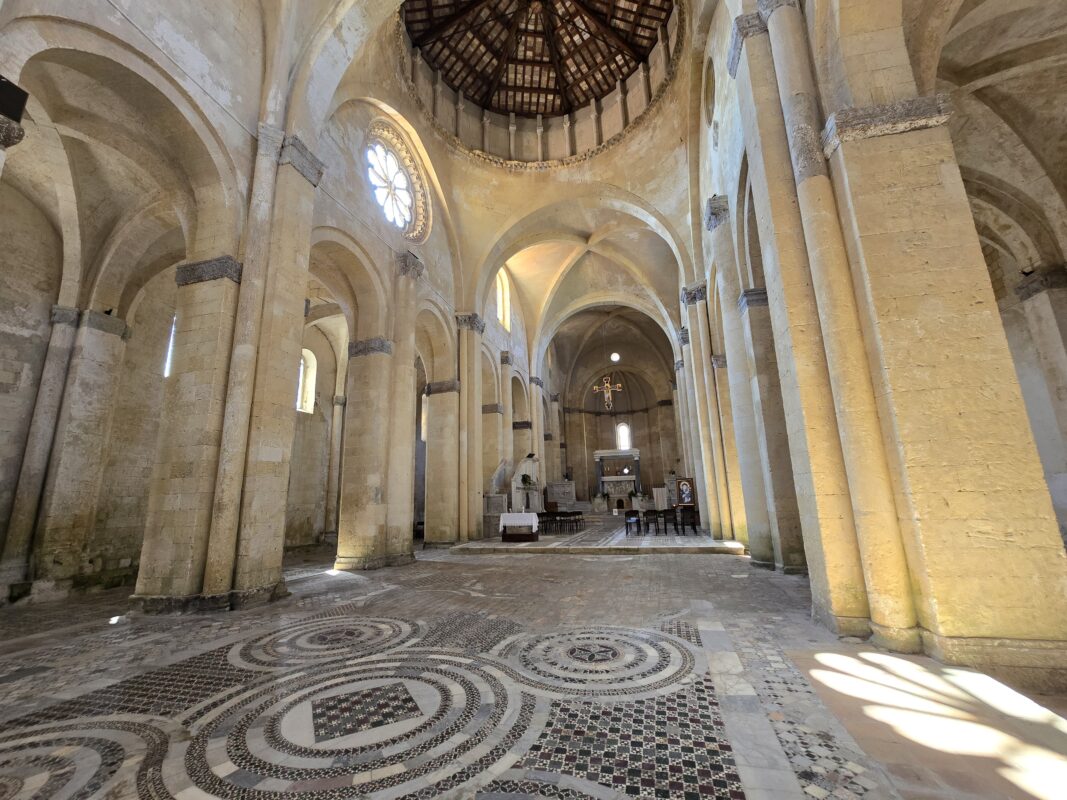
Alternatives to Rome from Civitavecchia
While Rome is the headline attraction from Civitavecchia, not every family wants to spend two hours each way on a bus. If you’ve already seen Rome, or simply prefer a lower-key port day, consider these alternatives:
- Tarquinia – An easy option close to the port, known for its Etruscan tombs and trolley tours that work well with kids.
- Bracciano & Lake Bracciano – A relaxed day out with a medieval castle and lake views, less than an hour from the port.
- Viterbo – A walled medieval city with a papal palace and family-friendly piazzas, about an hour inland.
- Tuscania – A picturesque hill town with striking medieval churches and countryside views.
These options give you the chance to enjoy authentic Italian towns and landscapes without the intensity of a Rome day trip.
Naples: Pompeii, Amalfi Coast, and Neapolitan Delights
Naples serves as your gateway to some of southern Italy’s most spectacular sights. Pompeii stands out as the best-preserved ancient Roman city, frozen in time by Mount Vesuvius’ eruption. Walking through its streets, houses, and amphitheater gives you an unparalleled glimpse into daily Roman life.
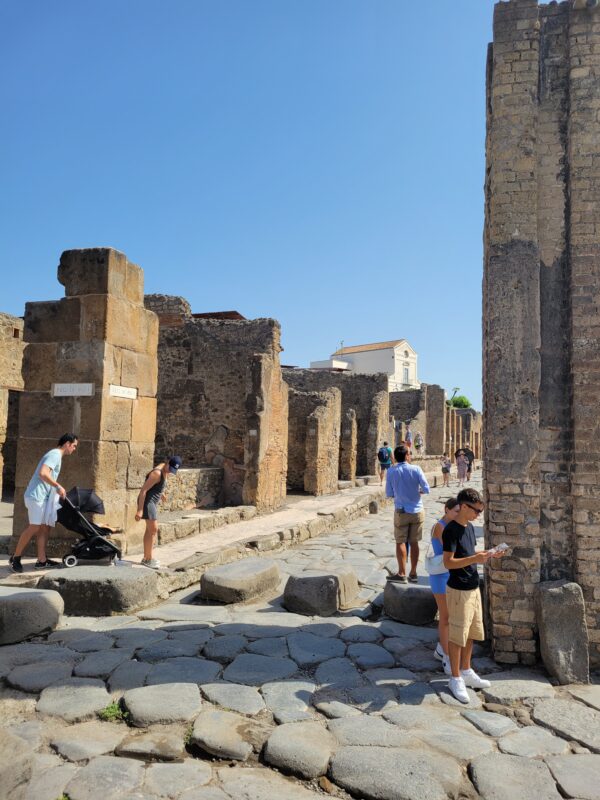
From Naples, you can also access the stunning Amalfi Coast or take the ferry to the Isle of Capri. Positano captivates visitors with its colorful homes cascading down steep cliffs to the sea. Nearby Ravello offers peaceful gardens and panoramic coastal views that have inspired artists for centuries.
If you prefer to stay in Naples itself, you can explore Castel dell’Ovo, the historic center, or sample authentic Neapolitan pizza—the city’s most famous culinary contribution—before returning to your ship.
Farther south, many itineraries include a stop in Sicily. Taormina is a favorite excursion choice, with its Greek Theatre, sweeping coastal views, and easy pace that works well for families.
Florence and Pisa (Livorno): Renaissance Treasures
From Livorno, most cruisers head to Florence, the cradle of the Renaissance. The Accademia Gallery houses Michelangelo’s David, while the Uffizi Gallery contains masterpieces by Botticelli, Leonardo da Vinci, and Raphael. The magnificent Duomo dominates the city’s skyline, and the Ponte Vecchio spans the Arno River, lined with its centuries-old jewelry shops.
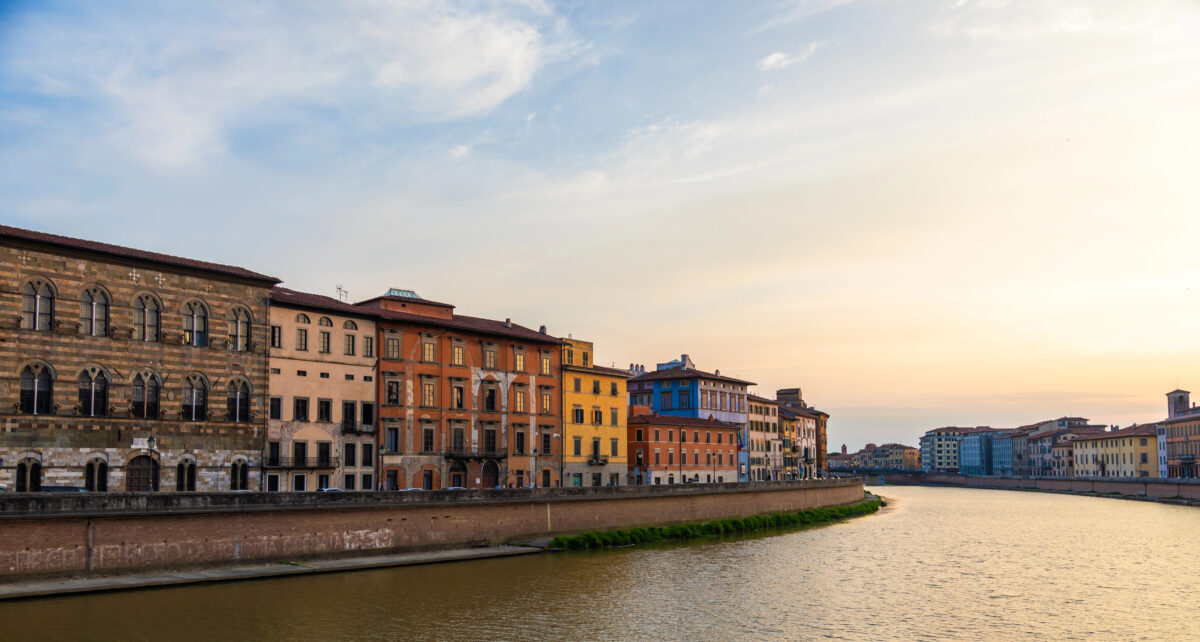
Many tours combine Florence with a stop in Pisa to see the famous Leaning Tower, the adjacent cathedral, and the baptistery in the Piazza dei Miracoli, also known as the Field of Miracles. While ambitious, this combination gives you a taste of two iconic Tuscan cities in one day.
For those who prefer a less urban experience, wine tours to the Tuscan countryside offer a delicious alternative, with tastings and traditional meals in scenic settings.
Cinque Terre (La Spezia): Colorful Coastal Villages
La Spezia serves as your jumping-off point to Cinque Terre, a string of five colorful fishing villages perched along the rugged Italian Riviera. Monterosso, Vernazza, and Riomaggiore are the most frequently visited, each with its own distinct character.
You can hike portions of the coastal trail connecting the villages, take the local train that links them, or enjoy a boat tour along the coast for the best views of the pastel-colored houses built into the steep cliffs.
In Monterosso, the only village with a proper beach, you can relax by the water or sample local seafood and pesto dishes. Vernazza charms visitors with its small harbor and piazza, while Riomaggiore’s steep, narrow streets lead to breathtaking viewpoints over the Mediterranean.
From La Spezia, you can also take a day trip to the postcard-perfect Portofino.
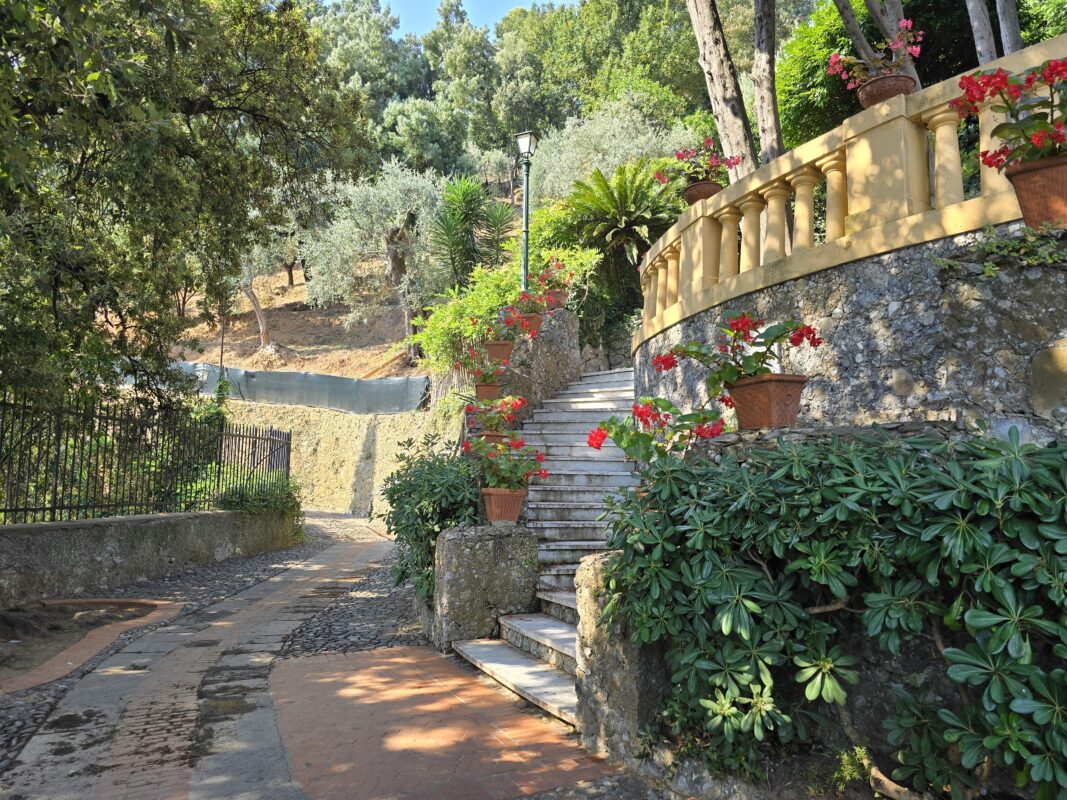
Greek Isles and Eastern Mediterranean Highlights
The Greek Islands and Eastern Mediterranean ports offer a perfect blend of ancient history, stunning landscapes, and vibrant local culture. From classical ruins to volcanic beaches, these destinations showcase the region’s diverse appeal.
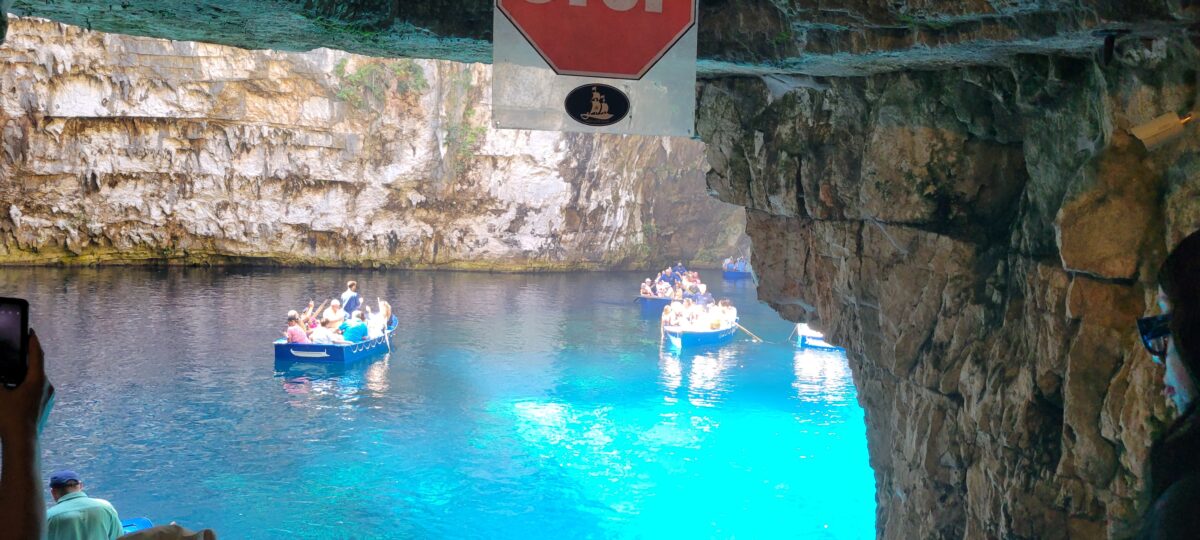
If your cruise includes Malta, you’ll find that Valletta is perfect for a DIY day, while nearby Mdina offers a quieter, timeless atmosphere inside its medieval walls.
Athens and the Acropolis: Classical Wonders
When your ship docks at Piraeus, Athens’ main port, you’re about 30 minutes from one of the world’s most significant archaeological sites. The Acropolis stands majestically above the modern city, with the Parthenon as its crowning glory. This ancient citadel offers spectacular views of Athens and houses several important temples that have influenced architecture worldwide.
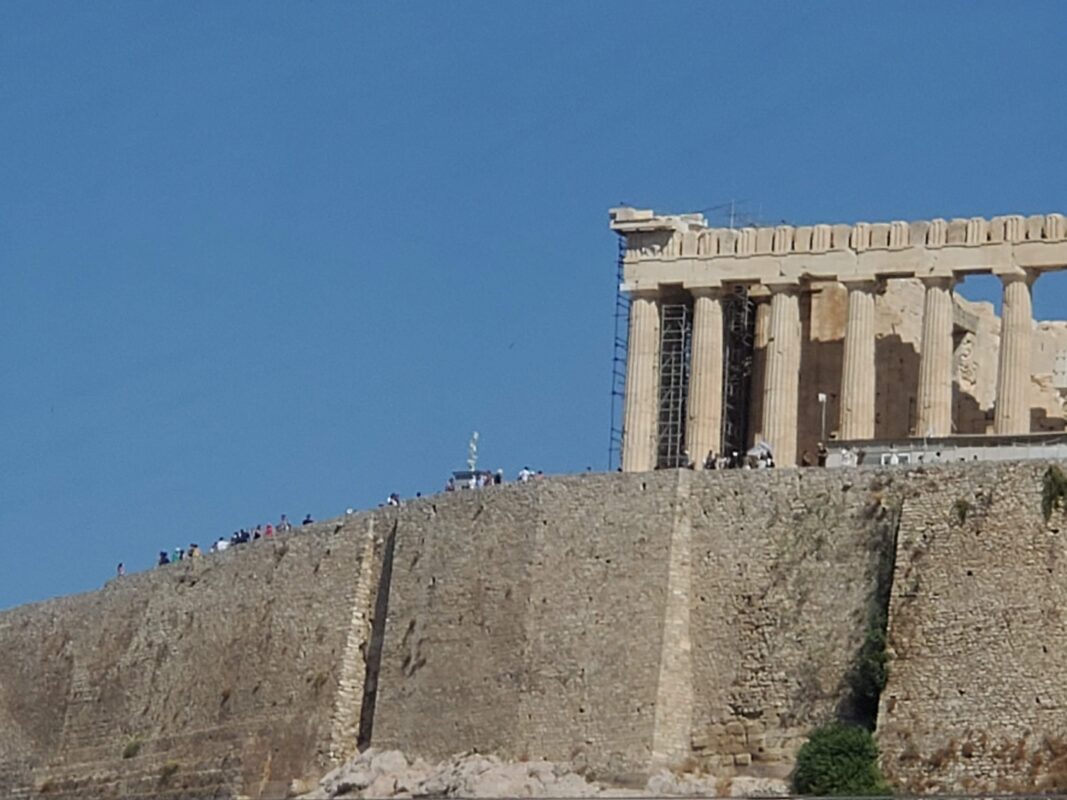
The nearby Acropolis Museum displays original sculptures and artifacts, providing context for what you’ve seen at the site. Just a short walk away, the Temple of Zeus and Ancient Agora offer additional glimpses into Athens’ classical past.
After exploring ancient sites, many visitors enjoy wandering through the Plaka district, where narrow streets lead to tavernas, craft shops, and Byzantine churches. This neighborhood gives you a taste of modern Greek life alongside its historic treasures.
Santorini: Dramatic Views and Volcanic Landscapes
Santorini consistently ranks among the most breathtaking ports in the Mediterranean. Most ships anchor in the caldera, requiring a tender boat to shore followed by a cable car, donkey ride, or steep walk up to the main towns perched on the crater rim.
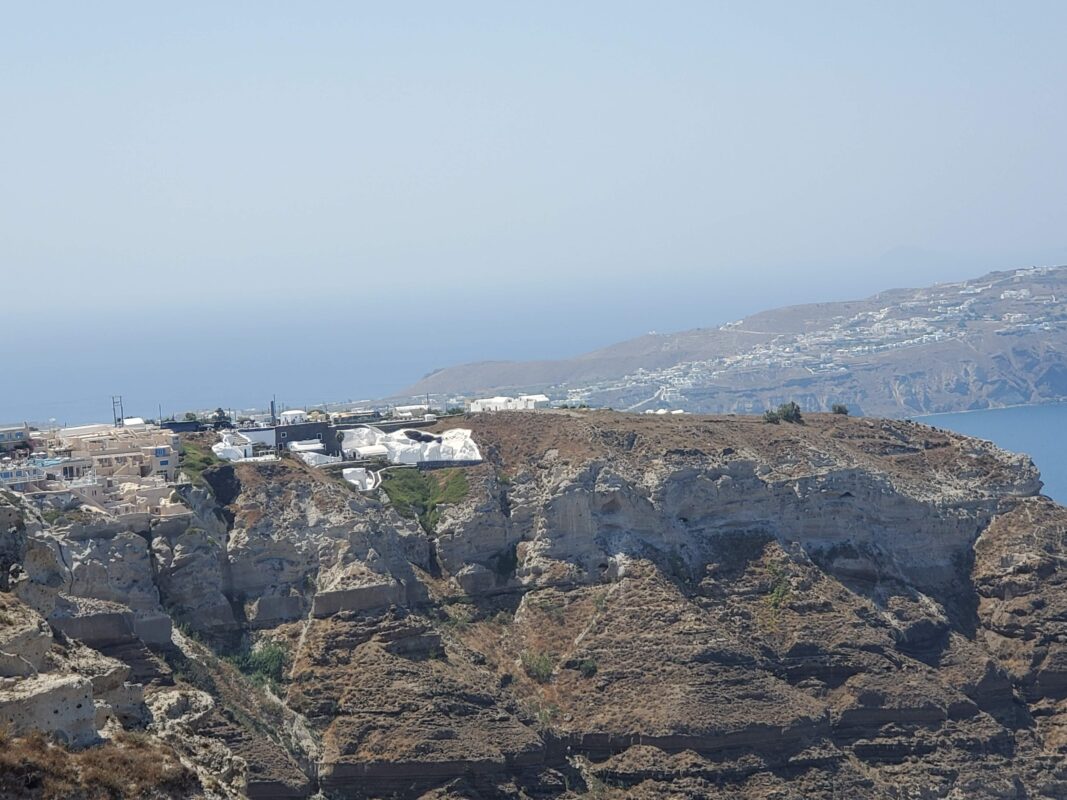
Oia, with its iconic blue-domed churches and whitewashed buildings, offers the quintessential Santorini experience. The village’s narrow pathways lead to countless viewpoints over the caldera, especially spectacular at sunset.
Fira, the island’s capital, provides similar views with more shopping and dining options. From here, you can visit the ancient site of Akrotiri, a Minoan settlement preserved by volcanic ash much like Pompeii.
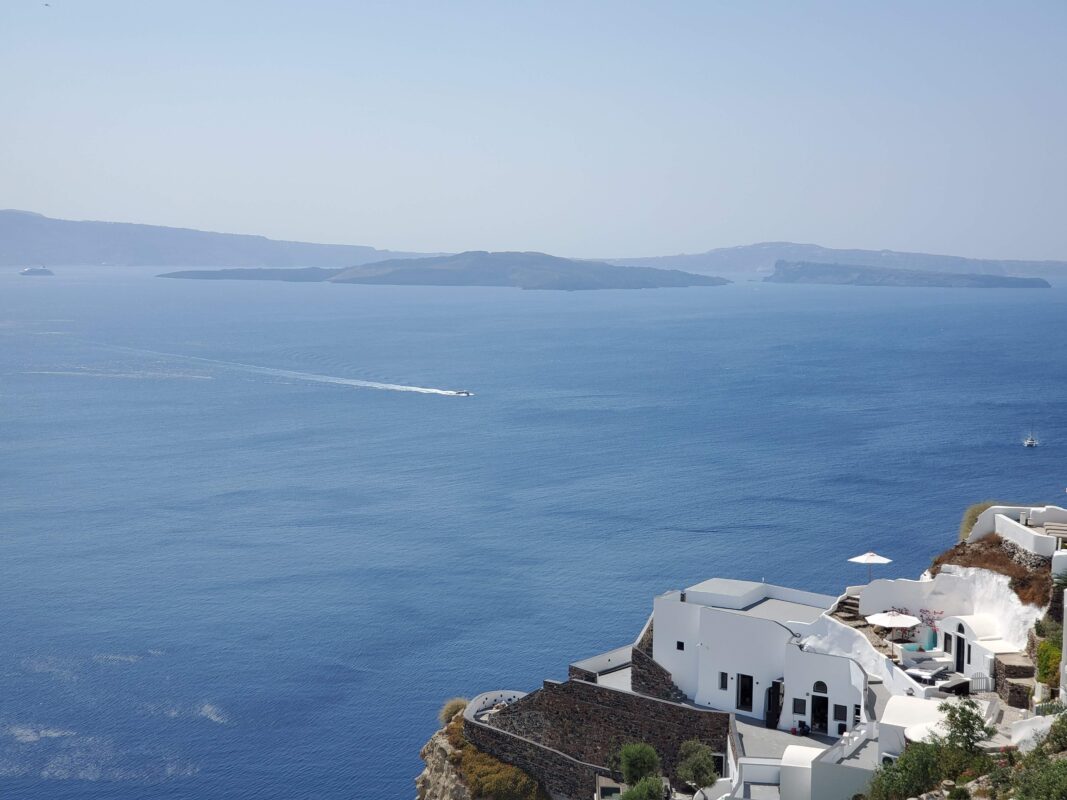
Wine lovers shouldn’t miss Santorini’s unique vineyards, where grapes grow in basket-like formations close to the ground to protect them from strong winds. The island’s volcanic soil produces distinctive wines, particularly the crisp white Assyrtiko.
Mykonos: Windmills, Beaches, and Island Charm
Mykonos balances traditional Greek island life with cosmopolitan flair. The island’s main town features a maze of narrow whitewashed streets designed to confuse pirates—and they still manage to disorient visitors today!
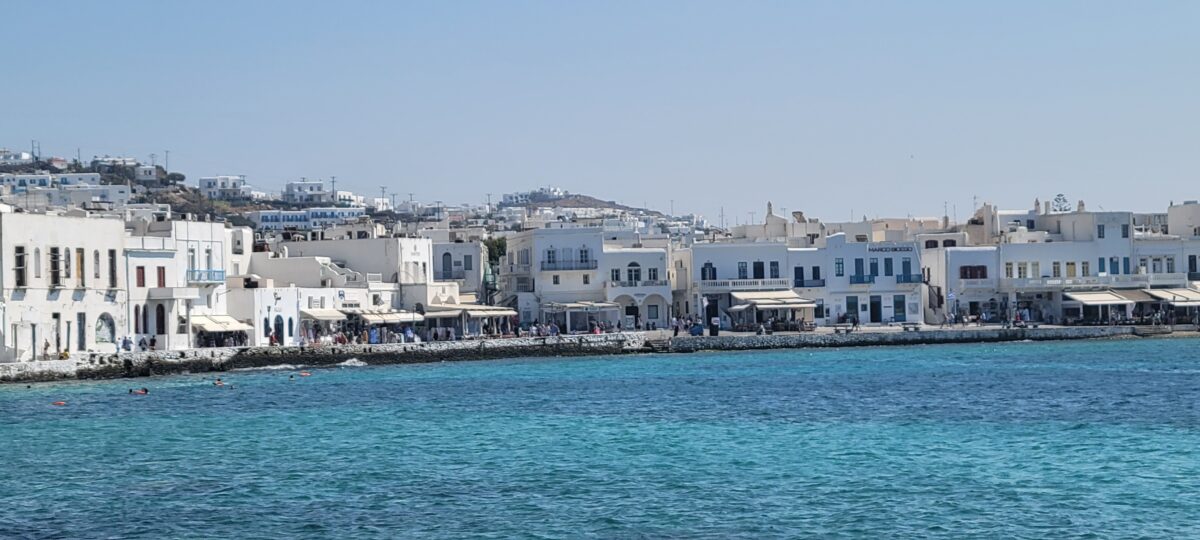
The iconic windmills overlooking Little Venice provide a perfect photo opportunity, especially at sunset when the waterfront cafes and bars come alive. Nearby, the Church of Panagia Paraportiani showcases the distinctive Cycladic architectural style.
For those seeking relaxation, Mykonos offers numerous beaches ranging from organized shores with loungers and music to quieter coves for swimming. Paradise and Super Paradise beaches are known for their party atmosphere, while Ornos and Platis Gialos are more family-friendly.
Crete and Ephesus: Ancient Worlds Preserved
On Crete, Greece’s largest island, the Palace of Knossos brings Minoan civilization to life. Linked to the myth of the Minotaur, the ruins showcase advanced engineering and artistry from more than 4,000 years ago.
Across the Aegean in Kusadasi, Turkey, Ephesus stands as one of the Mediterranean’s best-preserved ancient cities. Highlights include the Library of Celsus, the Great Theater, and marble streets once lined with shops and temples. Many excursions also visit the nearby House of the Virgin Mary, a pilgrimage site, along with the Basilica of St. John and the Ephesus Archaeological Museum.
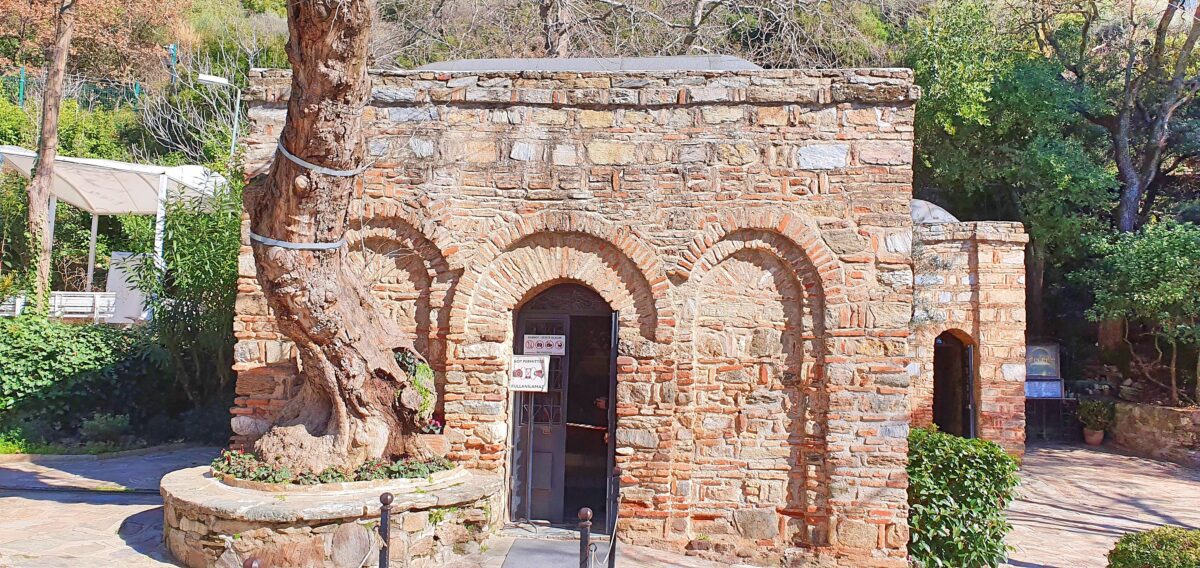
Spain and Western Mediterranean Gems
The Western Mediterranean offers a perfect blend of art, architecture, cuisine, and coastal beauty. From Barcelona’s whimsical buildings to the French Riviera’s glamorous shores, these ports deliver diverse experiences that appeal to every type of traveler.
Barcelona: Gaudí’s Masterpieces and Catalan Culture
Barcelona serves as both a popular embarkation port and a fascinating destination in its own right. The city’s architecture is dominated by Antoni Gaudí’s unique vision, most famously expressed in the still-unfinished Sagrada Familia basilica. This extraordinary church combines Gothic and Art Nouveau elements in ways that continue to astonish visitors more than a century after construction began.
Other Gaudí masterpieces worth visiting include Park Güell, with its colorful mosaics and panoramic city views, and Casa Batlló, whose undulating facade and dragon-inspired roof exemplify the architect’s organic style.
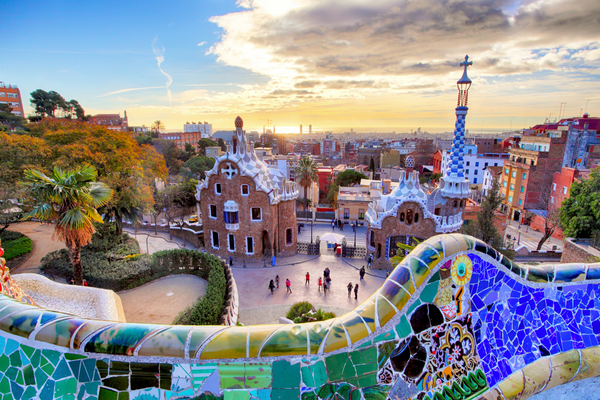
Beyond architecture, Barcelona offers exceptional food experiences. La Boqueria market bursts with fresh produce, seafood, and local specialties, while the Gothic Quarter’s tapas bars provide perfect spots to sample small plates of Spanish delicacies.
For those with more time, the Montserrat monastery makes an excellent day trip. Perched dramatically on a serrated mountain about an hour from the city, it houses the Black Madonna statue and offers hiking opportunities with spectacular views.
Marseille and the French Riviera: Mediterranean Elegance
Marseille serves as your gateway to Provence and the French Riviera. France’s oldest city blends gritty authenticity with Mediterranean charm, centered around the picturesque Old Port where fishermen sell their daily catch.
Many visitors head to the hilltop Notre-Dame de la Garde basilica for panoramic views over the city and sea. The historic Le Panier district offers narrow streets, colorful buildings, and artisan shops perfect for wandering.
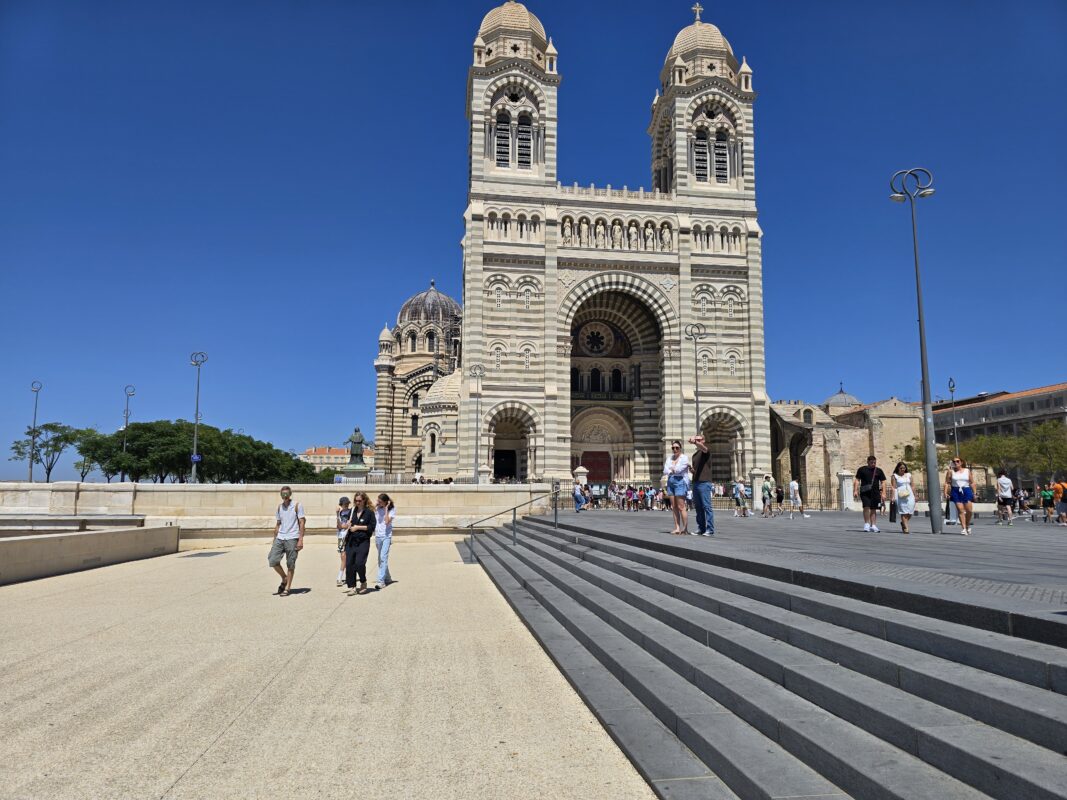
From Marseille, you can also visit the stunning Calanques National Park, where limestone cliffs create dramatic fjord-like inlets with turquoise waters. Small boat tours provide access to these natural wonders, or you can hike to viewpoints above the coast.
For those interested in Provence’s famous landscapes, excursions to Aix-en-Provence or the lavender fields (in season) showcase the region’s natural beauty and cultural heritage that inspired artists like Cézanne and Van Gogh.
Adriatic and Eastern Mediterranean Treasures
The Adriatic and Eastern Mediterranean offer some of the most photogenic and historically significant ports on any Mediterranean itinerary. From Croatia’s walled cities to Turkey’s cross-continental wonders, these destinations provide unique experiences that blend East and West.
Dubrovnik: Pearl of the Adriatic
Dubrovnik’s perfectly preserved medieval walls encircle a city of red-tiled roofs and limestone streets polished smooth by centuries of footsteps. Walking the complete circuit of these massive fortifications gives you spectacular views of the Adriatic Sea and the old town below.
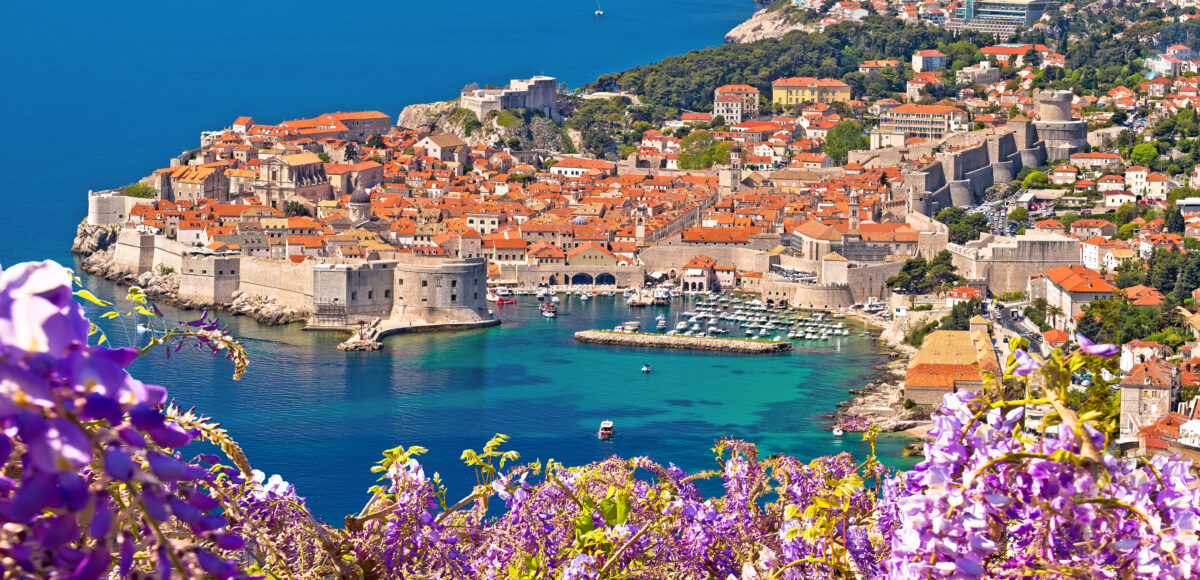
Within the walls, the main street (Stradun) connects Pile Gate to the harbor, lined with shops, cafes, and historic buildings. The Franciscan Monastery, Rector’s Palace, and Sponza Palace showcase different periods of the city’s rich architectural heritage.
Game of Thrones fans will recognize numerous filming locations, including the Jesuit Staircase (site of Cersei’s walk of atonement) and Lovrijenac Fortress (the Red Keep). Many tours now combine historical information with behind-the-scenes trivia from the show.
Istanbul: Where Continents Meet
Istanbul uniquely straddles Europe and Asia across the Bosphorus Strait, creating a fascinating blend of cultures, religions, and architectural styles. The city’s skyline is dominated by magnificent domes and minarets that reflect its importance in both Christian and Islamic history.
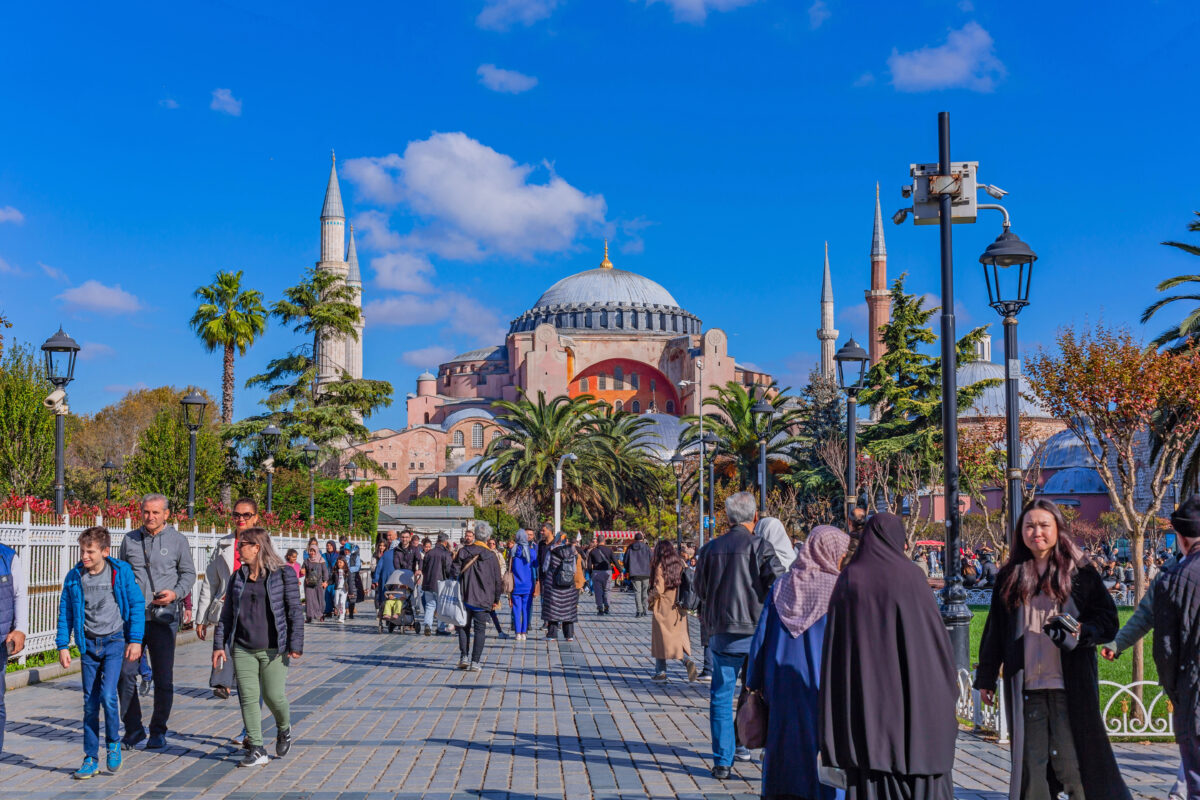
The Hagia Sophia stands as the ultimate symbol of this cultural crossroads. Built as a Byzantine cathedral in the 6th century, converted to a mosque in the 15th century, and now functioning as both a museum and mosque, its massive dome and glittering mosaics represent an engineering and artistic marvel.
Nearby, the Blue Mosque (Sultan Ahmed Mosque) impresses with its six minarets and interior adorned with thousands of blue Iznik tiles. The Topkapi Palace, once home to Ottoman sultans, offers glimpses into royal life with its lavish pavilions, courtyards, and treasury containing priceless jewels.
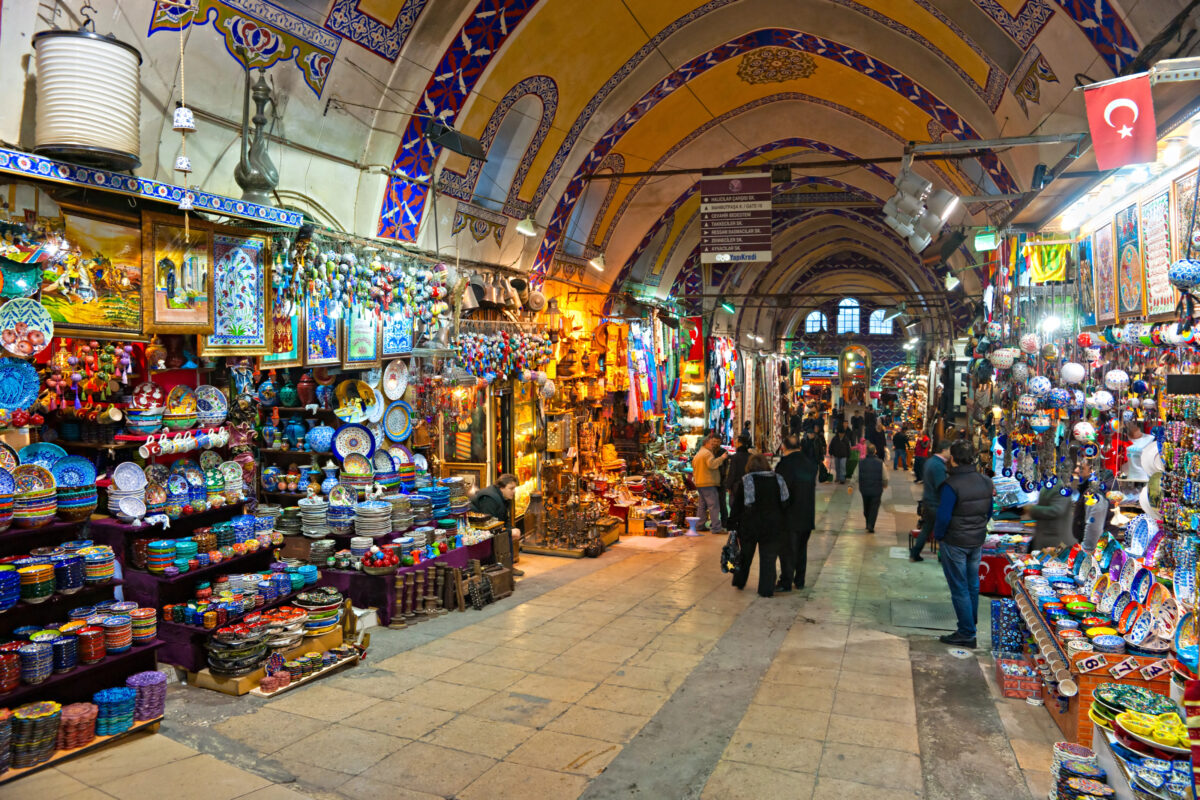
No visit to Istanbul is complete without experiencing the Grand Bazaar, one of the world’s oldest and largest covered markets. With over 4,000 shops selling everything from carpets and spices to jewelry and leather goods, it’s a sensory overload in the best possible way.
Tips for First-Time Mediterranean Cruisers
Plan your excursions based on both interest and energy level. Some ports, like Santorini or Dubrovnik, involve significant walking and stairs, while others, like Barcelona or Naples, offer more accessible options.
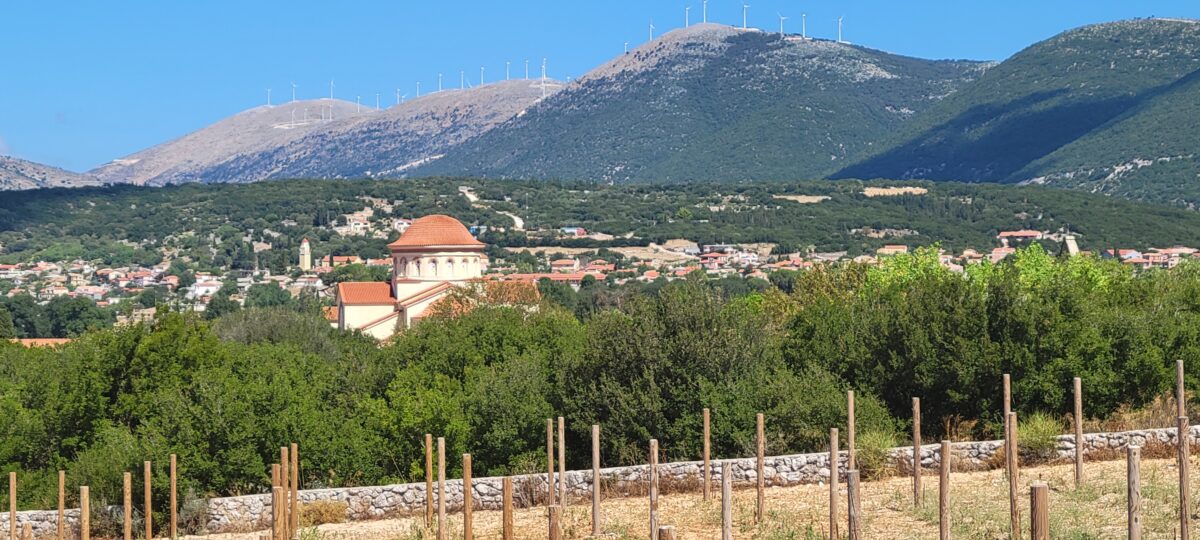
Consider booking through the cruise line for at least some shore excursions, especially those involving long distances from port or complex logistics. The peace of mind knowing your ship won’t leave without you can be worth the premium price.
Pack comfortable walking shoes and lightweight, modest clothing. Many religious sites require covered shoulders and knees, and Mediterranean ports often feature cobblestone streets that can be challenging in improper footwear.
Don’t try to see everything. Choose one or two priorities in each port rather than rushing through a checklist of attractions. Sometimes the most memorable experiences come from simply sitting at a local cafe, watching daily life unfold in a centuries-old piazza.
Closing Thoughts
Mediterranean shore excursions give families a chance to step inside history, soak up stunning scenery, and connect with local cultures — all within the comfort of a cruise itinerary. The key is balance: mix the must-see landmarks with downtime so your kids stay engaged and you return to the ship refreshed, not drained.
If you’re new to cruise travel, start with my guide on what cruise excursions actually are to get the basics. Before you go, make sure you know what to pack for a Mediterranean cruise. And for extra planning help, get a preview of Mediterranean cruise ports so you can match your shore day priorities with each destination.
With thoughtful planning, you’ll come home not just with photos of famous sights, but with shared experiences your family can talk about for years.

Elaine Warren
Founder & Crew Chief
Elaine founded this website after publishing the book The Family Cruise Companion’s Guide to Cruising With Kids. (Second edition recently released!) She has sailed on 45 cruises (and counting). She loves helping families navigate their way to an adventure-filled, fun, and memorable vacation.

